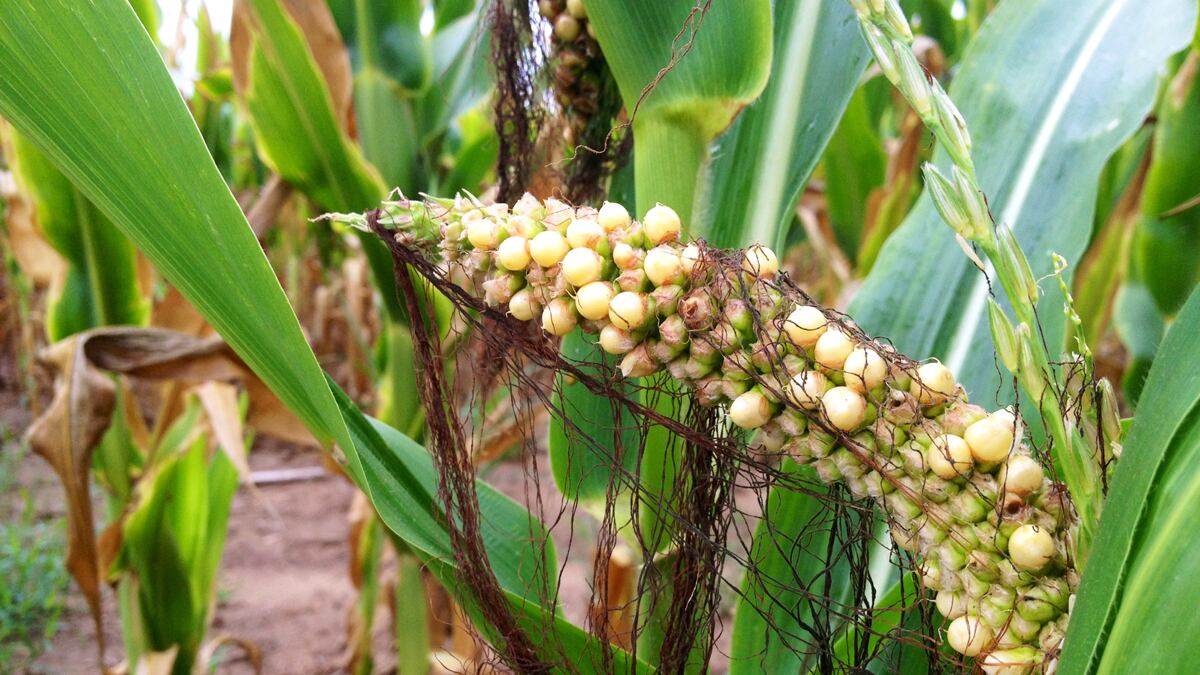A fine cloud of dust blows like brown snow across an unmarked gravel road near Stickney, S.D. The dust catches in the throat like smoke, and the tiny glasslike shards sting the eyes. However hard it is for humans, who can easily find shelter to escape the mini dust cyclones, its much worse on the animals. “It’s hard on the livestock,” says Dale Larsch, 39, who has 160 head of cattle and around 2,000 acres of corn, soybeans, and pasture land. “We’ve had a lot of sickness from the dust and insects, from pinkeye to pneumonia.”

Larsch, like most farmers and ranchers in the Midwest affected by the worsening drought of 2012, is making contingency plans to get through one of the worst years in recent memory. He grew up on a farm and can’t remember a drought worse than this one. He won’t be harvesting most of his corn to sell this year. Instead, he has already cut much of it for silage to feed his cattle through the winter. But it won’t be enough. “I’ll have to sell a few head—maybe 15 percent—because I won’t be able to feed them,” he told The Daily Beast. “But we won’t get anywhere near the price they are worth.”
A few miles down the road, Tyler Gerlach, 28, and his brother LaRon, 40, who took over their uncle’s farm about six years ago, are facing a similar plight with their grain crops. They farm about 3,000 acres, divided into corn, winter wheat, and soybeans. Rows and rows of their corn that should be more than six feet tall and lush are nothing more than brown leaves fluttering in the dry wind. Tyler opens an ear of corn to show the stunted growth. There are only a few pale kernels where golden corn should be. “There’s no grain here,” he says. “We’ll have to decide whether or not it is worth the price of the fuel to even run the combine through this.”
Droughts have always been part of farming and ranching in the hardest-hit areas of the Midwest. But this year is particularly bad because it is so widespread, says Larsch. Usually when one part of the agricultural heartland is affected, producers from other areas can fill in the vacuum. But with more than half of the United States suffering extreme drought conditions, there simply won’t be enough corn, grain, and livestock to feed the rest of the nation. Still, many of the farmers affected by the drought resent that they are already being blamed for higher food prices in the rest of the country. It’s a math equation that doesn’t make much sense, especially on grain-based foods. The U.S. Department of Agriculture estimates that only about 10 percent of individual products like bread are affected by the cost of grain. The rest is attributed to processing, packaging, and transportation.
“I’m not sure I get the math,” says Gerlach. “Some of the food prices should not be affected by this drought. Someone along the line is taking advantage of the bad news and making a profit on this drought.”

But some prices will justifiably be affected. When farmers like Larsch can’t feed their cattle, they cull their herds, which could initially cause a drop in beef prices in the supermarkets, according to the National Cattlemen’s Beef Association. But within a few months, prices will likely spike because of shortages. If farmers aren’t raising as many cattle, hogs, or poultry, there won’t be as much supply in stores.
Ethanol-based fuel is the one of the most vulnerable sectors of the 2012 drought. If there is no corn, many ethanol plants will have to suspend production. In what has become a Catch-22 situation, many farmers in the Midwest contract the presale of corn to the ethanol plants, meaning that regardless of their harvest, they have to provide corn to honor the contracts. Most ethanol plants won’t accept a monetary payout in lieu of corn, which means that farmers who lose their entire corn crops may still have to buy corn from out of state to meet their ethanol obligations.
One of the biggest myths that irks farmers is the misconception that crop insurance somehow replaces a good year’s harvest in full. Crop insurance does not cover losses of livestock, but it is compulsory for most farmers. The government subsidizes the premiums as an incentive to produce more crops. During bad years like 2012, the insurance offsets losses, but farmers agree that it does not even come close to equating having a good crop.
Farmers can decide how much of their crop to insure—from about 60 percent of an individual field to 80 percent of a whole farm. Premiums vary, and payouts are based on a 10-year history of the farmer’s yields. But in a state like South Dakota, it costs farmers between $500 and $600 an acre to plant a crop, including buying or renting the land; purchasing seed, fertilizer, and chemicals; and running the machinery to get it in the ground. During a good year, a farmer may make $700 to $800 an acre—and much more in some states—leaving a profit of about $100 to $200 an acre to invest in next year’s planting. The rest goes to farm maintenance or the purchase of new equipment—and an average tractor can cost up to a quarter of a million dollars.
During a drought, even with insurance, farmers won’t even break even, meaning there is no money left over to invest. “If farmers don’t make money, no one makes money,” says Tyler Gerlach. “Local businesses suffer the most, but so do big manufacturing companies and seed and fertilizer companies. Everybody loses when farmers have a bad year.”
Most farmers use the same calculation: of every 10 years, three or four will be below optimum because of weather, either too much or too little rain or natural disasters like hailstorms that can wipe out entire crops in a few minutes. Larsch says most farmers are set up for at least one bad year. “We have had a couple of good years in a row,” he says, “so most farmers will have been saving for years like this. But a couple of these in a row, and we will start seeing farm sales. We’ve had to learn to deal with this before. And we will deal with it again.”
The Gerlachs, who expect a 70 percent loss this year, say it’s just the nature of the business they are in. “You understand the risk when you are in a business where you basically throw yourself at the mercy of the weather,” says Tyler. “This is a bad year, but next year could be even worse. That won’t change what we do.”





